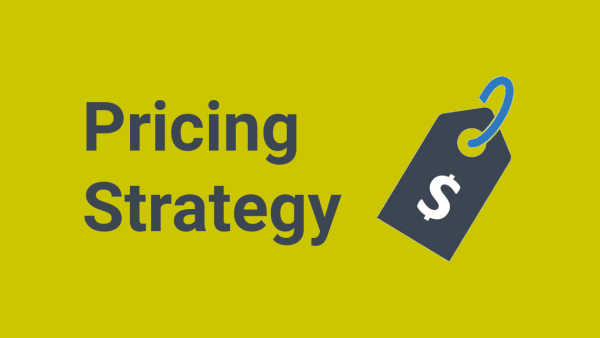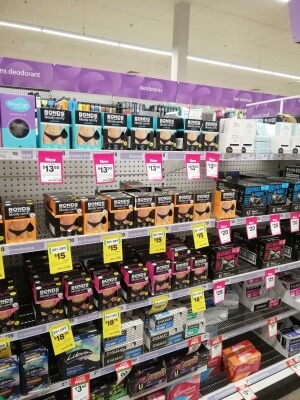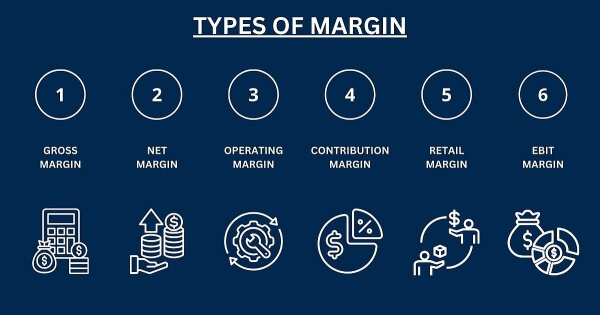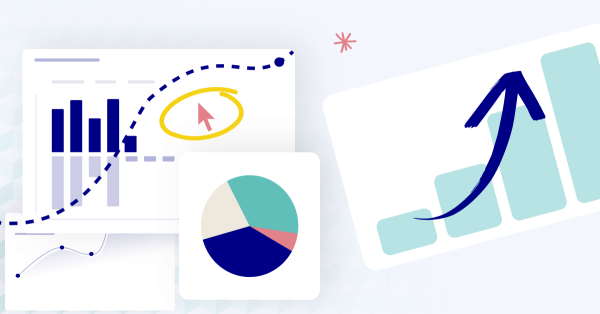Maximizing Your ROI: Period Underwear Wholesale Pricing, Retail Margins & Profitability Analysis?
Understanding the economics of period underwear is challenging. Many businesses struggle to price products appropriately, resulting in either poor sales (priced too high) or inadequate margins (priced too low) that threaten long-term viability.
Period underwear typically offers higher margins than traditional underwear, with wholesale costs ranging from $5-15 per unit depending on specifications. Retail pricing generally falls between $20-45, allowing for healthy 50-70% margins. Volume discounts, efficient material selection, and strategic product assortment can further enhance profitability.

At HAVING, we work closely with our partners to optimize their period underwear economics. Our experience manufacturing over 2 million units annually for retailers like Primark has given us unique insights into pricing strategies across market segments. Let me share what we've learned about maximizing return on investment in this growing category.
What Factors Determine Period Underwear Costs?
Many businesses underestimate the complexity of period underwear costing. Understanding the key cost drivers is essential for making informed decisions about product development and pricing.
Period underwear costs are influenced by five key factors: material selection (natural fibers cost more than synthetics), absorbency level (higher absorbency increases cost), construction complexity, order volume (larger orders reduce unit cost), and customization degree. These factors can create a 30-50% cost variance between basic and premium products.

When we develop period underwear with our partners at HAVING, we analyze each cost component to identify optimization opportunities. Here's a detailed breakdown of the factors that influence product costs:
Material Cost Factors
Face Fabric Selection
| Material Type | Relative Cost | Cost Impact |
|---|---|---|
| Conventional Cotton | Medium | Baseline |
| Organic Cotton | High | +20-30% |
| Bamboo/Modal | High | +15-25% |
| Polyester/Nylon Blends | Low to Medium | -5-15% |
| Recycled Synthetics | Medium to High | +10-20% |
Absorbent Layer Costs
The absorbent core represents 20-30% of material costs, with significant variation based on:
-
Absorbency Level: Higher capacity requires more material
- Light: Baseline cost
- Medium: +10-15% over light
- Heavy: +20-30% over light
- Super/Overnight: +30-40% over light
-
Absorbent Material Type:
- Standard microfiber: Baseline cost
- Premium microfiber: +15-25%
- Cotton absorbent layers: +10-20%
- Specialized technical absorbents: +25-40%
Leak-Proof Barrier Costs
Barrier materials typically represent 15-20% of material costs:
- Standard PUL (polyurethane laminate): Baseline cost
- Premium TPU (thermoplastic polyurethane): +15-25%
- Specialized breathable barriers: +20-30%
- Eco-friendly alternatives: +25-40%
Construction Complexity
Manufacturing costs vary significantly based on design complexity:
- Basic Construction: Simple cuts with standard gusset (baseline)
- Moderate Complexity: Contoured gusset, additional panels (+10-20%)
- High Complexity: Multiple panels, special seaming techniques (+20-30%)
- Technical Construction: Bonded seams, seamless technology (+30-50%)
Order Volume Impact
Economies of scale significantly impact unit costs:
- 500-1,000 units: Baseline price
- 1,001-3,000 units: 5-10% discount
- 3,001-5,000 units: 10-15% discount
- 5,001-10,000 units: 15-20% discount
- 10,000+ units: 20%+ discount (negotiable)
This volume scaling explains how mass market retailers like Primark can offer period underwear at lower price points while maintaining margins.
Customization Level
Brand-specific customization affects costs:
- Standard Design with Branding: Minimal cost impact
- Custom Colors/Prints: +5-15% depending on complexity
- Custom Materials: +10-30% depending on specifications
- Custom Construction: +15-40% depending on complexity
For detailed information on period underwear materials and technology that influence costs, visit our comprehensive guide: Period Underwear Technology & Materials: A Buyer's Guide to Absorbency, Fabrics & Leak-Proofing.
How Should You Price Period Underwear at Retail?
Determining the optimal retail price point is crucial for maximizing both sales volume and profit margins. Many businesses either leave money on the table with too-low pricing or limit their market with excessive prices.
Period underwear retail pricing typically follows three main strategies: cost-plus (applying standard markup to wholesale cost), market-based (aligning with competitive offerings), or value-based (pricing according to perceived consumer value). Most successful brands use a hybrid approach, with retail prices typically 2.2-3x wholesale cost, resulting in 55-70% gross margins.

At HAVING, we help our partners develop pricing strategies that optimize profitability while remaining competitive. Here's our guidance on retail pricing approaches:
Pricing Strategy Comparison
| Pricing Strategy | Advantages | Disadvantages | Best For |
|---|---|---|---|
| Cost-Plus | Simple, ensures minimum margin | Ignores market conditions, may leave money on table | Basic products, price-sensitive markets |
| Market-Based | Ensures competitive positioning | May compress margins, follows rather than leads | Crowded market segments, similar products |
| Value-Based | Maximizes profit potential, reflects brand value | Requires strong brand, more complex to determine | Premium products, unique features, strong brands |
| Hybrid Approach | Balances margin needs with market reality | Requires more analysis and adjustment | Most period underwear brands |
Market Positioning and Price Points
Period underwear typically falls into four market segments:
Mass Market ($15-25 retail)
- Typical Wholesale Cost: $5-8
- Markup Factor: 2.0-2.5x
- Gross Margin: 50-60%
- Key Features: Basic functionality, standard materials
- Distribution Channels: Mass retailers, drugstores, online value retailers
Our work with Primark falls into this category, delivering quality products at accessible price points through high-volume production.
Mid-Market ($25-35 retail)
- Typical Wholesale Cost: $8-12
- Markup Factor: 2.5-3.0x
- Gross Margin: 60-67%
- Key Features: Better materials, enhanced absorbency, more style options
- Distribution Channels: Department stores, specialty retailers, direct-to-consumer
This segment represents the largest portion of the market and offers the best balance of accessibility and margin.
Premium ($35-45 retail)
- Typical Wholesale Cost: $12-15
- Markup Factor: 2.8-3.2x
- Gross Margin: 65-70%
- Key Features: Premium materials, advanced technology, enhanced sustainability
- Distribution Channels: Specialty retailers, boutiques, direct-to-consumer
Premium positioning requires clear differentiation through materials, technology, or brand value.
Luxury ($45+ retail)
- Typical Wholesale Cost: $15+
- Markup Factor: 3.0-3.5x
- Gross Margin: 67-72%
- Key Features: Luxury materials, cutting-edge technology, exclusive designs
- Distribution Channels: High-end retailers, luxury boutiques, premium DTC
This segment is small but growing, particularly with designer collaborations entering the category.
Price Anchoring Strategies
Effective price anchoring can enhance perceived value and increase average order value:
- Good-Better-Best Tiering: Offering products at multiple price points
- Bundle Pricing: Discounted multi-packs that increase total purchase
- Subscription Models: Reduced per-unit pricing for recurring purchases
- Comparison to Lifetime Disposable Costs: Highlighting long-term savings
For insights on building a balanced product line across price points, visit our guide on Curating Your Collection: A B2B Guide to Period Underwear Styles, Absorbencies & Material Options.
What Profit Margins Should You Target?
Setting appropriate margin targets is essential for sustainable business growth. Many businesses focus solely on gross margins without considering the complete margin structure needed for profitability.
Healthy period underwear businesses typically target gross margins of 55-70%, contribution margins of 40-55% (after direct selling costs), and net margins of 10-20% (after all operating expenses). Direct-to-consumer brands generally achieve higher margins than wholesale-focused businesses but incur higher marketing and fulfillment costs.

At HAVING, we help our partners develop margin structures that support sustainable growth. Here's our guidance on target margins at each level:
Margin Structure Breakdown
Gross Margin
Gross margin represents the difference between retail price and product cost:
Gross Margin = (Retail Price - COGS) ÷ Retail Price
Target gross margins by business model:
- Mass Market Retail: 50-60%
- Mid-Market Retail: 60-67%
- Premium Retail: 65-70%
- Direct-to-Consumer: 70-80%
Contribution Margin
Contribution margin accounts for direct selling costs:
Contribution Margin = Gross Margin - Direct Selling Costs
Direct selling costs typically include:
- Retail: Commissions, retail fees, chargebacks (5-15%)
- DTC: Payment processing, shipping, fulfillment (15-25%)
Target contribution margins by business model:
- Retail Distribution: 40-50%
- Direct-to-Consumer: 45-55%
Net Margin
Net margin accounts for all operating expenses:
Net Margin = Contribution Margin - Operating Expenses
Operating expenses typically include:
- Marketing: 10-30% of revenue (higher for DTC)
- Overhead: 10-20% of revenue
- Product Development: 3-8% of revenue
Target net margins by business model:
- Established Retail Brands: 15-20%
- Growing DTC Brands: 10-15%
- Early-Stage Brands: 5-10% (or temporarily negative during growth phase)
Margin Enhancement Strategies
Several strategies can improve margins without increasing retail prices:
Cost Optimization
- Material Engineering: Optimizing material specifications without compromising quality
- Construction Efficiency: Streamlining manufacturing processes
- Volume Consolidation: Combining orders across styles for better pricing
- Component Standardization: Using common materials across multiple styles
Revenue Enhancement
- Bundle Pricing: Encouraging multi-unit purchases at slightly reduced per-unit pricing
- Subscription Models: Creating recurring revenue with modest discounts
- Upselling: Adding higher-margin accessories (washing bags, storage pouches)
- Direct Sales Mix: Increasing the percentage of direct-to-consumer sales
Channel Strategy
- Channel Mix Optimization: Balancing high-volume/lower-margin retail with high-margin DTC
- Retail Partner Selection: Prioritizing retailers with favorable margin structures
- International Expansion: Entering markets with higher price tolerance
- Alternative Distribution: Exploring specialized channels (medical, sports, subscription boxes)
For information on developing your own private label period underwear line with optimal margins, visit our detailed resource: Your Brand, Your Product: The Complete Guide to Private Label (OEM/ODM) Period Underwear Manufacturing.
How Do You Analyze Period Underwear Profitability?
Many businesses lack effective tools for analyzing product profitability. Without proper analysis, it's difficult to identify which products, channels, and strategies deliver the best returns.
Comprehensive profitability analysis for period underwear should include product-level contribution analysis (identifying which styles and absorbency levels generate the most profit), channel profitability comparison (retail vs. DTC vs. wholesale), customer acquisition cost evaluation, and lifetime value calculation to determine true long-term returns.

At HAVING, we help our partners implement analytical frameworks that provide actionable insights. Here are the key analyses we recommend:
Product-Level Contribution Analysis
Evaluate the profit contribution of each product in your line:
Product Contribution = (Unit Price - Unit COGS - Direct Selling Costs) × Volume
This analysis often reveals surprising insights:
- High-volume basic styles may contribute more total profit despite lower margins
- Premium styles may deliver higher margins but lower total contribution due to volume
- Certain absorbency levels may consistently outperform others
Style Profitability Matrix
Create a matrix comparing margin percentage and sales volume:
| Category | Characteristics | Strategy |
|---|---|---|
| Stars (High Margin, High Volume) | Core styles with strong demand and good margins | Invest in growth, expand variations |
| Cash Cows (Low Margin, High Volume) | Basic styles that sell well but at lower margins | Optimize costs, maintain position |
| Question Marks (High Margin, Low Volume) | Premium products with potential but limited sales | Increase marketing or reconsider positioning |
| Dogs (Low Margin, Low Volume) | Underperforming styles with poor economics | Discontinue or completely redesign |
Channel Profitability Comparison
Different sales channels have distinct profitability profiles:
Channel Contribution = Total Channel Revenue - (COGS + Channel-Specific Costs)
Typical findings include:
- DTC offers highest margins but has higher marketing and fulfillment costs
- Retail provides volume but has lower margins and less control
- Wholesale offers predictable orders but lowest margins
Customer Acquisition Cost Analysis
For direct-to-consumer sales, analyze acquisition efficiency:
CAC = Total Marketing Spend ÷ New Customers Acquired
Benchmark CAC against industry standards:
- Efficient: CAC < 30% of first purchase value
- Sustainable: CAC = 30-50% of first purchase value
- Concerning: CAC > 50% of first purchase value
Customer Lifetime Value Calculation
Calculate the long-term value of customers:
LTV = Average Order Value × Purchase Frequency × Customer Lifespan × Margin
Period underwear has favorable LTV characteristics:
- Replacement Cycle: Typically 1-2 years
- Cross-Selling: Opportunity for multiple absorbency levels and styles
- Category Expansion: Potential to expand into related intimate apparel
Profitability Dashboard Example
Create a dashboard tracking key metrics:
- Product Metrics: Margin by style, absorbency level, and material
- Channel Metrics: Contribution by sales channel, retailer, and geography
- Customer Metrics: CAC, LTV, and LTV:CAC ratio
- Trend Analysis: Margin evolution over time, seasonal patterns
For market insights that can inform your profitability strategy, visit our detailed analysis: Understanding the Period Underwear Market: Trends, Demographics & Opportunities for B2B Buyers.
Conclusion
Maximizing ROI in the period underwear category requires a strategic approach to pricing, margins, and profitability analysis. By understanding cost drivers, implementing appropriate pricing strategies, targeting healthy margin structures, and conducting regular profitability analysis, businesses can build sustainable, profitable operations in this growing market.
For a comprehensive overview of the entire period underwear category, including manufacturing considerations and partnership opportunities, visit our Ultimate B2B Guide to Sourcing & Selling Period Underwear.
At HAVING, we combine manufacturing expertise with business insights to help our partners optimize their period underwear economics and achieve long-term success.
Frequently Asked Questions (FAQ)
What's the typical markup multiplier for period underwear?
Most successful period underwear brands use a markup multiplier of 2.2-3.0x wholesale cost for retail pricing. Mass market products typically use lower multipliers (2.0-2.5x), while premium brands can command higher multipliers (2.8-3.5x).
How do period underwear margins compare to traditional underwear?
Period underwear typically offers 5-15% higher gross margins than traditional underwear due to its technical nature and value proposition. While production costs are higher, the functional benefits justify premium pricing that more than offsets these costs.
What's the most profitable absorbency level for period underwear?
Medium absorbency typically generates the highest total profit contribution, balancing optimal margins with highest consumer demand. Heavy absorbency products often have slightly lower margins due to increased material costs but remain strong performers due to good consumer demand.
How should I price multi-packs of period underwear?
Multi-packs typically offer a 10-20% discount compared to individual purchase prices. Three-packs are the most common bundle, offering enough variety for different cycle days while providing meaningful savings to motivate larger purchases.
What's a healthy customer acquisition cost (CAC) for period underwear?
For direct-to-consumer period underwear brands, healthy CAC typically ranges from $25-40, representing 30-50% of the first purchase value. This allows for profitability within 2-3 orders, which aligns with typical customer retention patterns.
How do sustainable materials affect period underwear margins?
Sustainable materials typically increase costs by 10-30% but can command price premiums of 15-40%, potentially increasing overall margins by 5-10% when properly marketed to environmentally conscious consumers.
